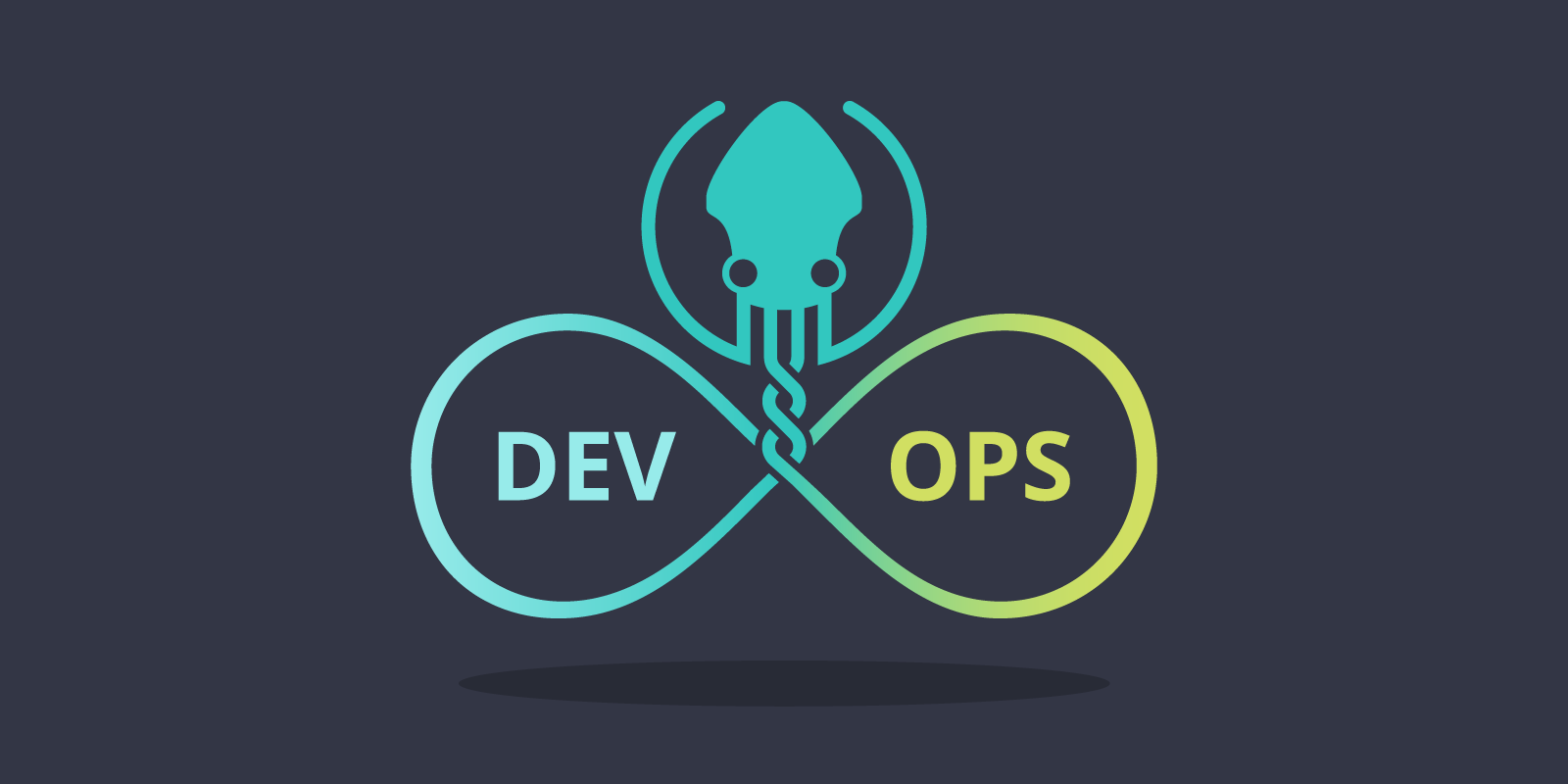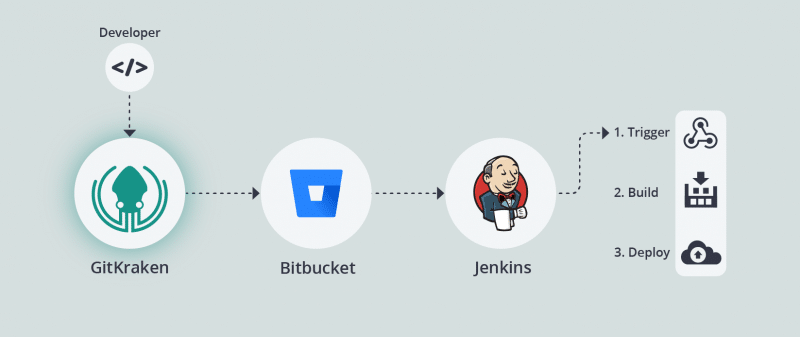
Continuous Integration. *I’m listening…* Continuous Delivery. *Go On…* DevOps. *YAAAS!*
DevOps methodology has been taking over the headlines as companies big and small are adopting this strategy for development and sharing their experiences. Amazon, Target, and Netflix are just a few companies “killing it at DevOps” according to TechBeacon. Following these processes has resulted in organizations improving and releasing their products faster than their competition while increasing in-depth communication and decreasing context-switching.
In this article, we will show you how you can enhance your DevOps workflow using three tools that work together to bring users speed, automation, and efficiency.
The three awesomely-useful tools we will look at in this article are: GitKraken Git Client, Bitbucket Server, and Jenkins. Start your engines! 🏎💨
The Flow
1. Start with an intuitive environment for working with your Git repositories.
And begin a free Pro trial in-app or upgrade to Pro for $49.
Note: You will need Pro to unleash the power of one of GitKraken’s newest features:
Bitbucket Server integration.
2. Authenticate with Bitbucket Server.
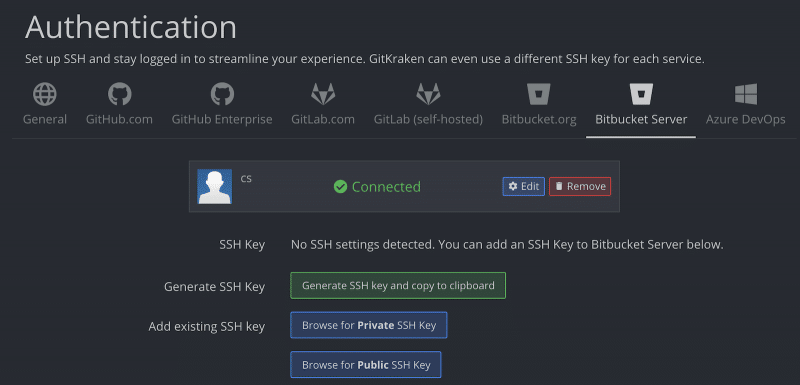
3. GitKraken has always allowed users to push and pull changes to Bitbucket Server over HTTPS/SSH, but in the v4.2 release we introduced new, valuable features for Bitbucket Server users such as cloning, working with remotes, and managing pull requests.
This brings me to the third step in the flow:
Clone an existing Bitbucket Server repo or initiate a new one using the Bitbucket Server integration.
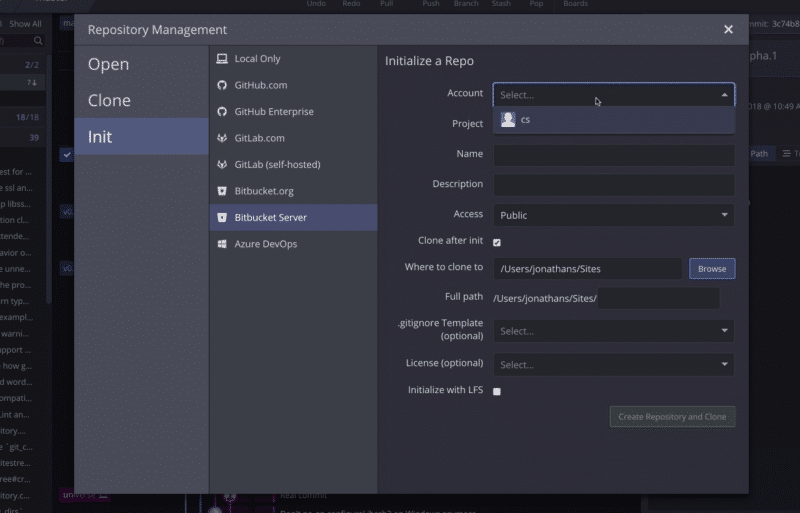
4. You have code to write, right?! 🤣 Use GitKraken’s in-app file editor to write and edit code like the engineering-champ you are. Did I mention the in-app file editor has syntax highlighting, a file mini-map, and auto-complete for many programming languages?
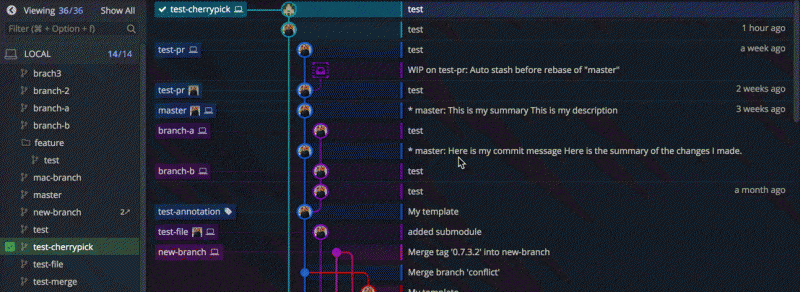
5. The code looks good and has been committed. Use the pull request feature via the Bitbucket Server integration in GitKraken to start your PR.
Integrations with popular Git repository hosting sites–like Bitbucket Server–help bring actions you would typically perform elsewhere into GitKraken. Don’t you love the feeling of taking action outside of your Git client, without having to leave your Git client? Thank you, integrations! 🙌
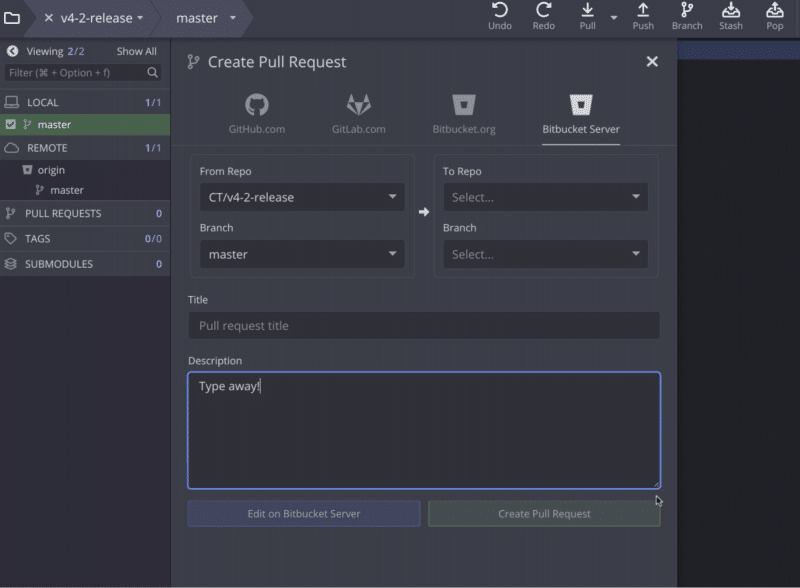
6. Your changes passed code review with flying colors! 👏 Your PR is now merged.
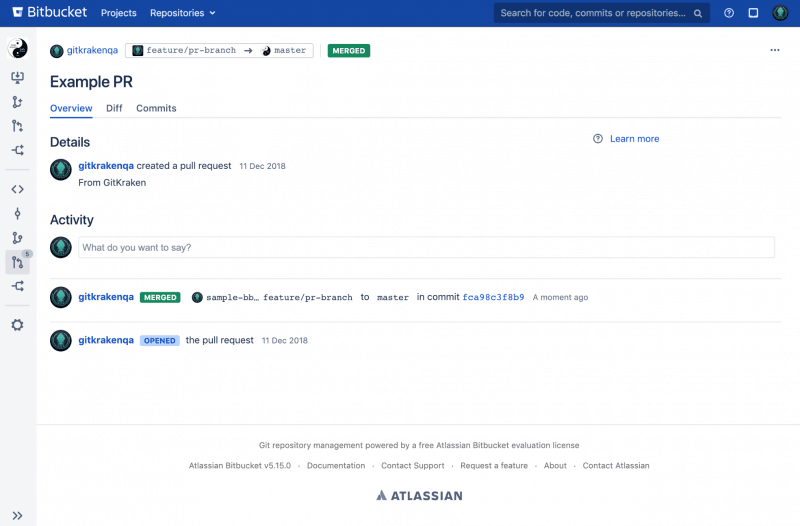
7. Welcome to the final phase of the flow! Trigger a test build in Jenkins using a webhook from Bitbucket Server to Jenkins. In our example, whenever a PR is merged to the production branch, a test build is triggered in Jenkins.

DevOps Can Now Be Yours
To sum it up, here are a few benefits of using these tools and this flow:
- Know if code is broken before it’s deployed
- Remove human-error and the need to “babysit” your build processes
- Eliminate context-switching between tools
- Integrate code changes from all team members
And there you have it! In seven quick steps, with the ease and skill of a Formula 1 driver, we’ve navigated the course and showed you how three independent tools can be used together. 🏎💨 We hope you feel ready for your champagne shower at the top of the podium.
Psst: 🗣Dig into DevOps and discover the 2020 DevOps Tools Report today.
If you already have Bitbucket Server with webhooks and Jenkins, I bet you can perform the steps mentioned above in less time than it took you to read this article…. Find out for yourself!
 GitKraken MCP
GitKraken MCP GitKraken Insights
GitKraken Insights Dev Team Automations
Dev Team Automations AI & Security Controls
AI & Security Controls